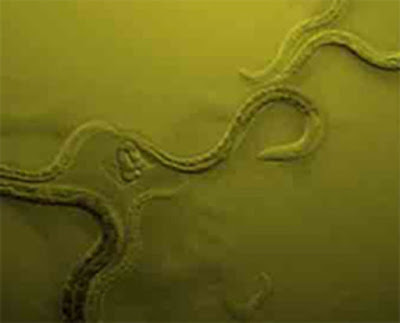Everything is interrelated in this world. Nothing stands alone. Life itself is a community process. One animal lives with and off another. Indeed, many creatures cannot survive without the presence of particular others. Caenorhabditis elegans worms living "alongside" slugs is a case in point.
Slugs eat decomposing plants. Worms get a ride to new destinations by going through a slugs' intestines and being dropped out in poo in other locations. Consequently, worms can better exploit food resources. Surviving another animals digestive system is something unexpected.
C. elegans is the leading lab guinea pig. More is known about it than mice. However, its journey to regions anew has just been discovered. Moreover, they live on the surface of the ground not in the soil as previously supposed. Their food supply of bacteria and fungi are quickly exhausted so they have to move to new pastures.
♣
◆ Biology by Ty Buchanan ◆
●




